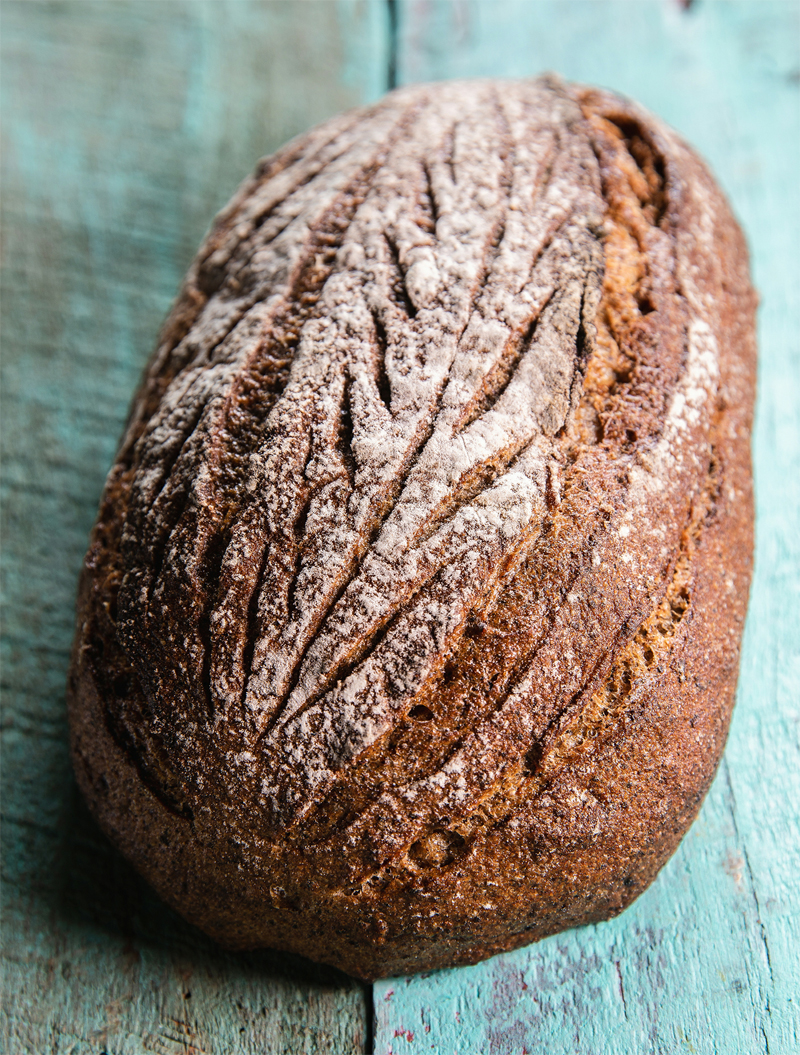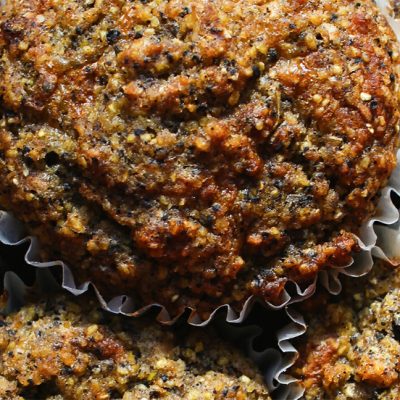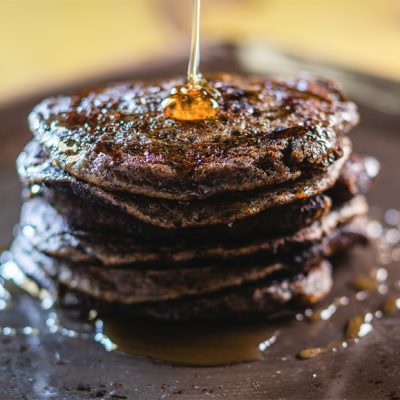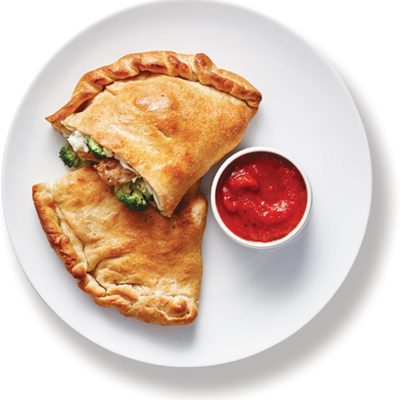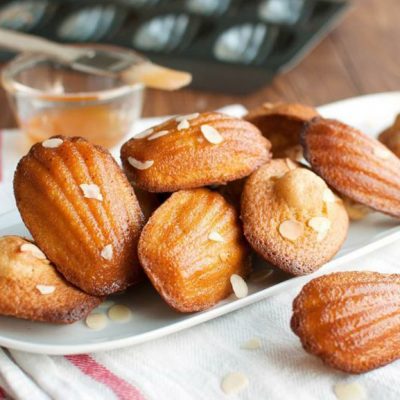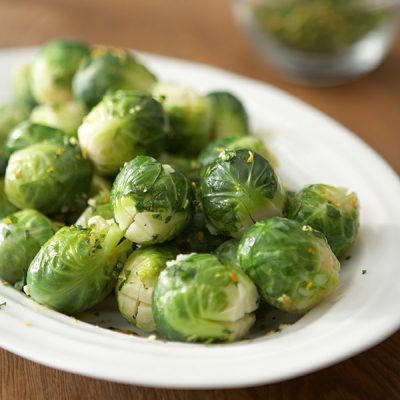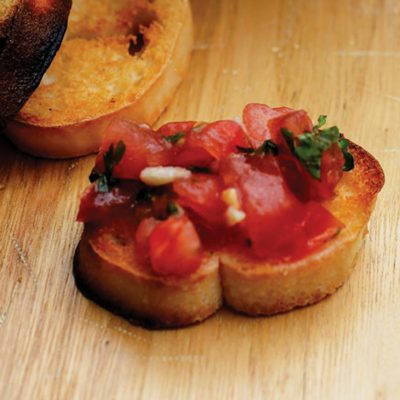Ingredients
-
120 grams 100 percent hydrated active Sourdough Starter
-
500 grams unbleached Bread Flour
-
100 grams whole Wheat Flour
-
160 grams roasted seed Okra Flour
-
40 grams Corn Flour
-
640 grams Water
-
17 grams Salt
Directions
Steps
|
1
Done
|
Feed your starter in the morning, 4–5 hours before you want to mix the bread. The amount of time this will take depends on the temperature of the water, as well as the ambient temperature of your kitchen. Use tepid water between 68° and 72°F (20–22°C). Monitor your starter and look for cues that it is active. It’s ready to leaven bread when the surface is full of bubbles, it has a domed top instead of a sunken one, and a small amount of it floats in a glass of water. |
|
2
Done
|
Scale out each type of flour and combine in a bowl. Don’t add the salt yet. Measure the water into a large bowl and then add the active starter. Using your hands, mix the water and starter together. The water will become cloudy and the starter will mostly dissipate. Add the flours into the water (remember, no salt yet!) and mix until all the flour is hydrated. The dough will be lumpy and shaggy, and you should not see any unincorporated flour. Cover the dough and allow it to sit for 1 hour. |
|
3
Done
|
After the hour has passed, sprinkle the salt over the top of the dough. Sprinkle some water on top of the salt, too just enough to moisten it and promote absorption. Let it sit for a couple of minutes, then mix, squeezing the dough between your fingers to ensure that the salt is evenly distributed. Cover the dough and let it rest for 30 minutes. |
|
4
Done
|
During the next 2 hours, periodically fold the dough gently, allowing 30 minutes’ rest between. Wet your hands to prevent the dough from sticking. Using both hands, grab the dough from the top, pulling it up until it does not want to stretch anymore, then fold it down on itself. The fold should cover about two-thirds of the dough mass. Rotate your bowl a quarter turn clockwise and repeat for a total of four folds. When you complete this series of folds, you will notice that the dough will take on more of a ball shape. |
|
5
Done
|
After 2 hours and three folding sessions, place the dough in the refrigerator overnight. Keep it in an airtight container so it does not dry out. The dough may rest in the refrigerator between 12 and 18 hours. |
|
6
Done
|
The next day, your dough will be ready to bake. Flour a work surface and scrape your dough out onto it. Cut the dough in half (measure by eye or use a scale) and gently shape into two equal rounds. Cover the dough and allow it to rest for 30 minutes. |
|
7
Done
|
The final shape of your bread depends on your preference and the materials you have available. If you have access to a Dutch oven or baking stone, you can shape the dough into rounds or batards. (A hearth loaf needs a very hot baking surface combined with steam to bake well.) Let them proof in well-dusted banneton baskets or in linen-lined and flour-dusted bowls. Alternatively, you may do a final pan loaf shape and place the dough in standard bread pans that have been oiled. For both of these methods, cover the dough loosely with plastic or a towel and let it proof. This may take 1–3 hours. |
|
8
Done
|
The bread will rise to fill its container. Gently poke the bread to gauge when it is ready to bake. When the indentation slowly rises back, leaving behind a slight dent, it’s ready. If it is underproofed, the bread will bounce right back at you, but if it is overproofed the poke will deflate the gases in the bread. It takes practice and experience to determine exactly when the bread is ready for baking. Remember, even if the bread is over- or underproofed, it will still taste delicious! |
|
9
Done
|
For a pan loaf, bake at 450°F (230°C) for about 30 minutes or until the bread reaches an internal temperature of 200°F (93°C). For a hearth loaf, your oven should be preheated to 500°F (260°C), along with the baking stone or Dutch oven. Gently release the bread from its basket onto a piece of parchment paper. |
|
10
Done
|
The side that had rested in the basket will be the top of the bread. Score the bread using a sharp knife. Slide the parchment and bread onto a hot baking stone, or gently pick it up by the paper and put it into the heated Dutch oven, then place the lid back on top. Creating steam is important. If you use a baking stone, you can put hot water into a shallow pan and place it into the oven along with the bread. If you use the Dutch oven, bake the bread with the lid on for the first 15 minutes to create steam, then remove the lid to finish baking. The bread should bake for about 35 minutes or until it reaches an internal temperature of 200°F (93°C). Alternatively, you may tap on the bottom of the loaf; it should make a hollow thump. |
|
11
Done
|
Let the bread cool on a rack before you cut into it. Share and enjoy! |

